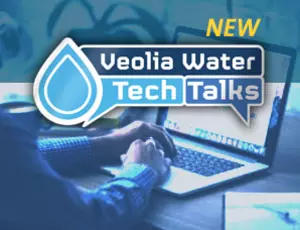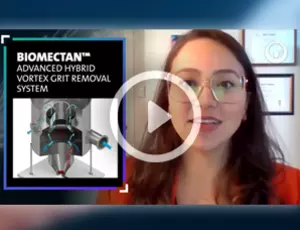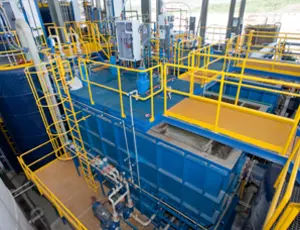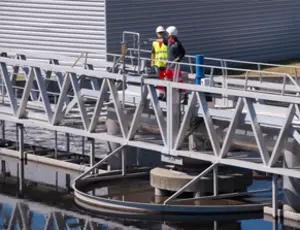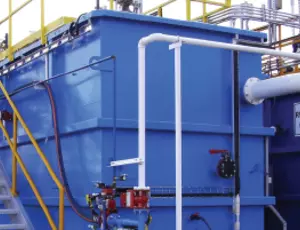In order to produce water suitable for use, there is often a need to remove suspended matter and minerals.
Veolia is experienced in the appropriate clarification and softening technologies for your unique needs.
Clarification & Softening are two common water treatment applications that are used by both industrial and municipal organizations.
The Water Clarification Process
Conventional clarification is composed of three steps, these being coagulation, flocculation, and sedimentation. Together, these processes can remove suspended solids and particulate matter, resulting in water with reduced TSS (Total Suspended Solids) and turbidity. These clarification systems are commonly used in drinking water, process/intake water, and wastewater treatment applications.
- Coagulation intends to neutralize the electrical charges of floating particles, stopping them from repelling one another within the water. This is often achieved through the use of iron or aluminum salts, chemical compounds that contain both positive and negatively charged ions.
- After these charges have been neutralized, flocculation occurs as manipulation of the water allows the particles to clot into larger clumps. This is facilitated by water-soluble organic compounds, which serve as weighted anchors for the matter to bind to.
- Finally, the flocs settle to the bottom of the reactor and removed from the clarifier for further processing.
About Water Softening
Upon extended exposure to hard water, calcium and magnesium deposits may form on the interior of pipes and other surfaces. This accumulation is most common in areas where water is being heated, and might threaten to block water flow, which could in turn cause reduced efficiency or complete failure.
There are a multitude of technology types that can help remove minerals from water streams, such as:
FAQ's
What is ACTIFLO High-Rate Clarification Technology?
What is ACTIFLO High-Rate Clarification Technology?
ACTIFLO® is a high-rate clarification process that operates with microsand as a seed for floc formation. The microsand provides surface area that enhances flocculation and acts as a ballast to form robust, rapidly settling floc. The unique settling characteristics of the microsand ballasted floc allows for a clarifier design with high overflow rates, short retention times, and minimal sludge volumes within the unit. These designs result in footprints that are five times smaller than classic lamella clarifiers and up to 20 times smaller than conventional clarification systems.
Why is clarification important in the purification of surface water?
Why is clarification important in the purification of surface water?
The need for clarification and the coagulation process of water treatment is very important in the purification of surface water supplies. Its principal use is for the removal of colloidal substances which impart turbidity, color, or taste to water. Concern for each of these conditions may exist for either potable supplies as well as waters for industrial use.
Featured Resources & Information



